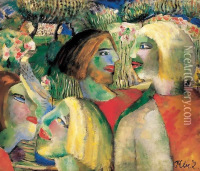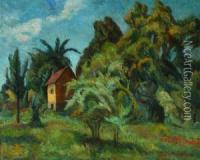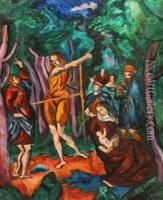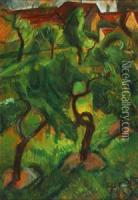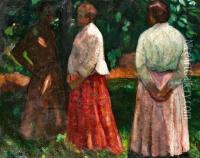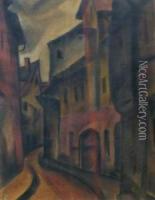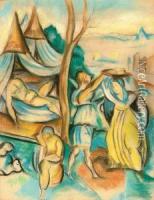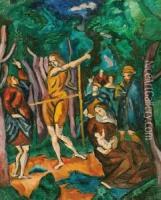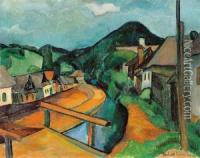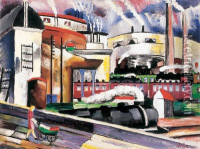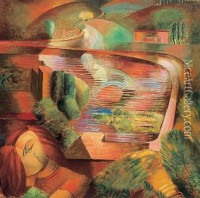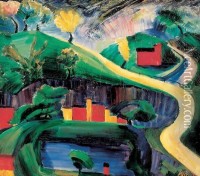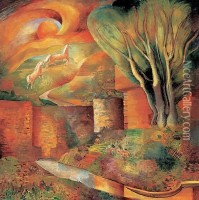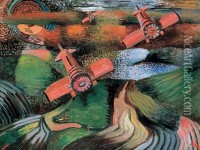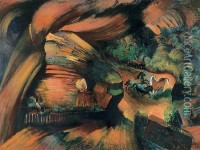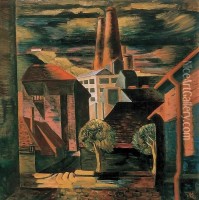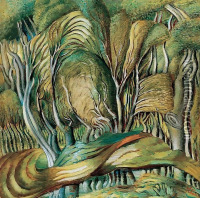Vilmos Perlrott-Csaba Paintings
Vilmos Perlrott-Csaba was a Hungarian painter, known for his role in the development of modern Hungarian art and for his unique style that merged various influences such as Fauvism, Expressionism, and traditional Hungarian art. Born on January 10, 1880, in Pécs, Hungary, Perlrott-Csaba showed an early interest in art and went on to study at the Budapest Academy of Fine Arts. He continued his education in Paris, where he was exposed to the vibrant art scene and was particularly influenced by the works of Cézanne and the Fauves.
During his time in Paris, Perlrott-Csaba developed his own artistic style, characterized by bold colors and dynamic brushwork. He was a part of the Nagybánya artists' colony, which played a crucial role in introducing modern art movements to Hungarian painting. His work during this period reflected the influence of French modernism, yet he retained a connection to his Hungarian roots.
After serving in World War I, Perlrott-Csaba's style evolved further, showing elements of Expressionism with an increased focus on emotional expression and a more dramatic use of color and form. Throughout the 1920s and 1930s, he exhibited his work extensively in Hungary and abroad, gaining recognition and acclaim.
In addition to his painting, Perlrott-Csaba was also an influential teacher, sharing his knowledge and philosophy of art with a new generation of Hungarian artists. He taught at the Hungarian Academy of Fine Arts, where his approach to art and teaching had a lasting impact on his students.
Perlrott-Csaba's later works often featured landscapes, still lifes, and portraits, with a continued emphasis on expressive color and form. Despite the changing art trends over the decades, he remained committed to his unique artistic vision.
Vilmos Perlrott-Csaba died on August 25, 1955, in Budapest, Hungary. His legacy lives on through his contributions to Hungarian art and the many students he inspired. Perlrott-Csaba's works are held in several major museums in Hungary and continue to be celebrated for their vibrant energy and the synthesis of international modernist styles with Hungarian artistic traditions.
